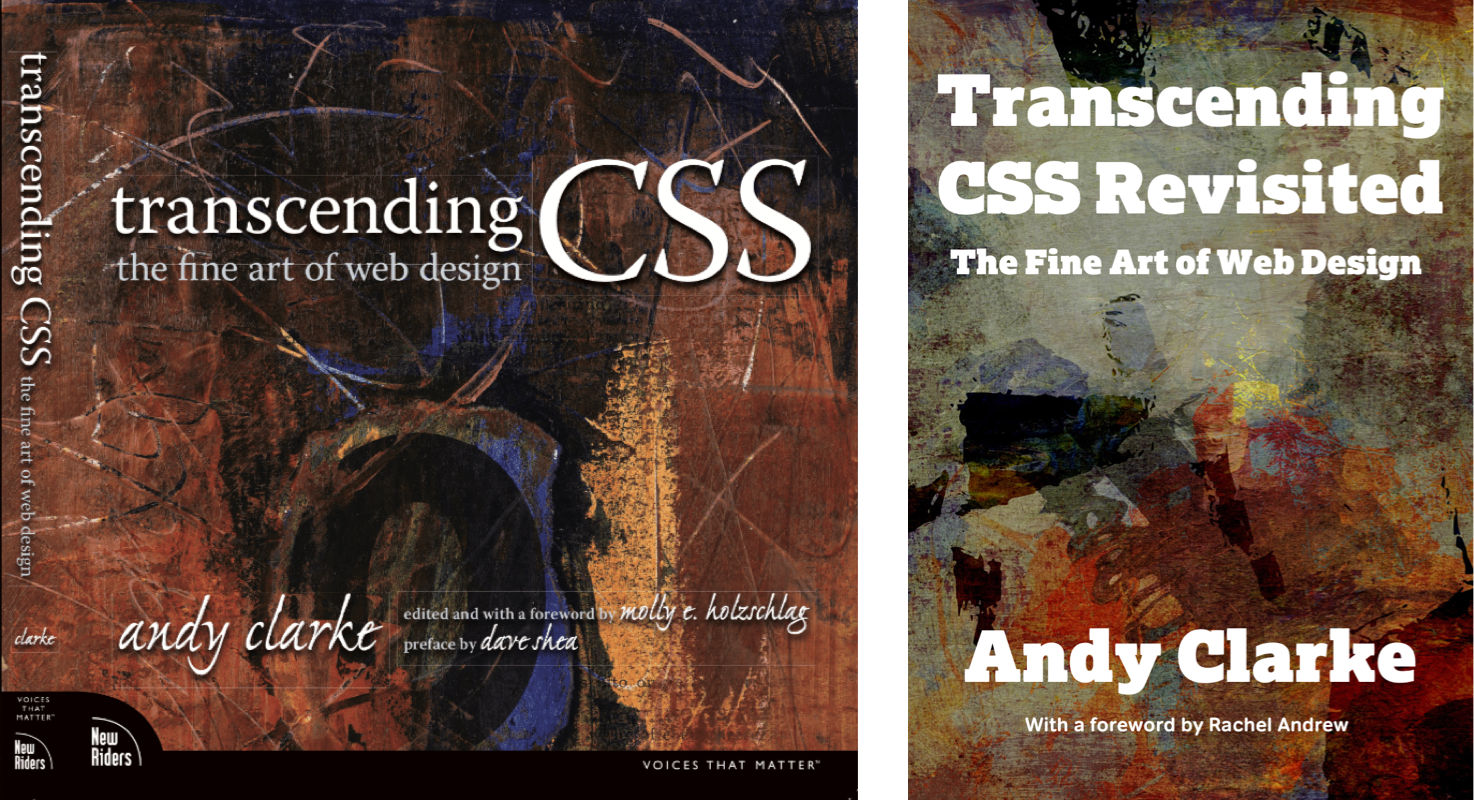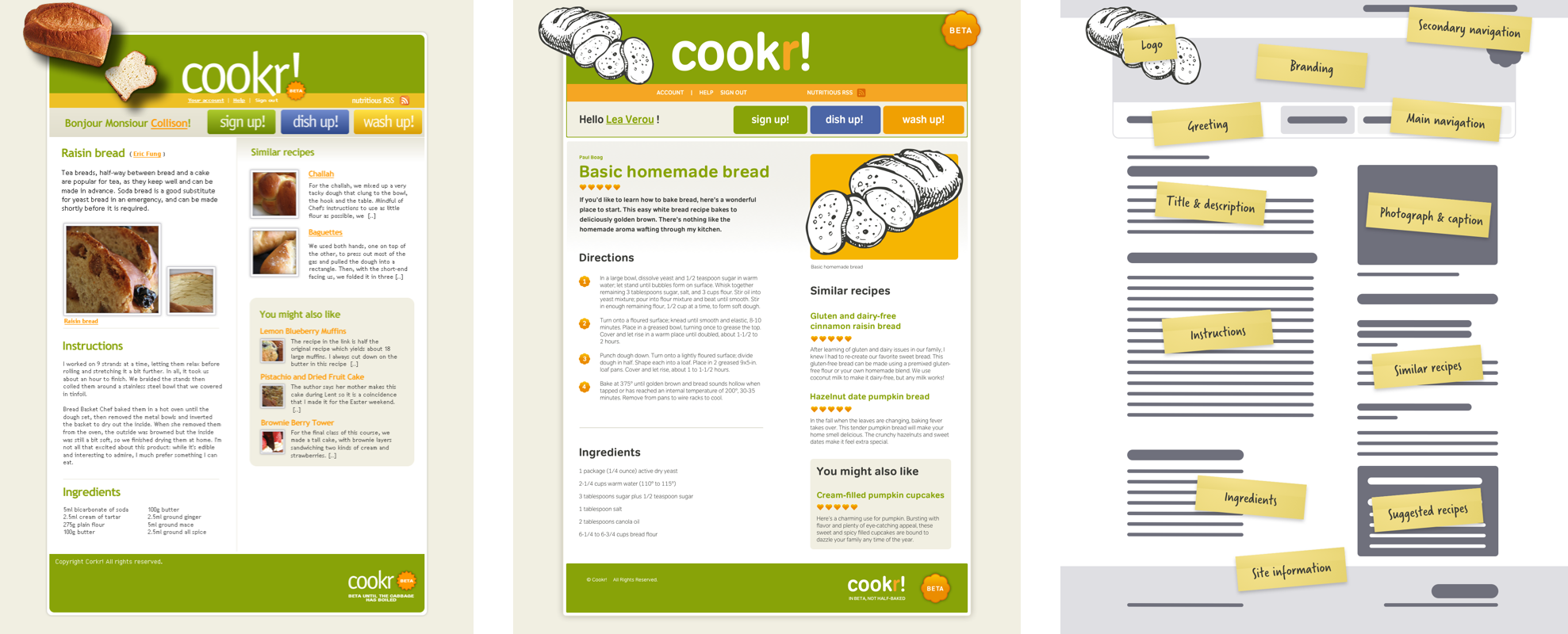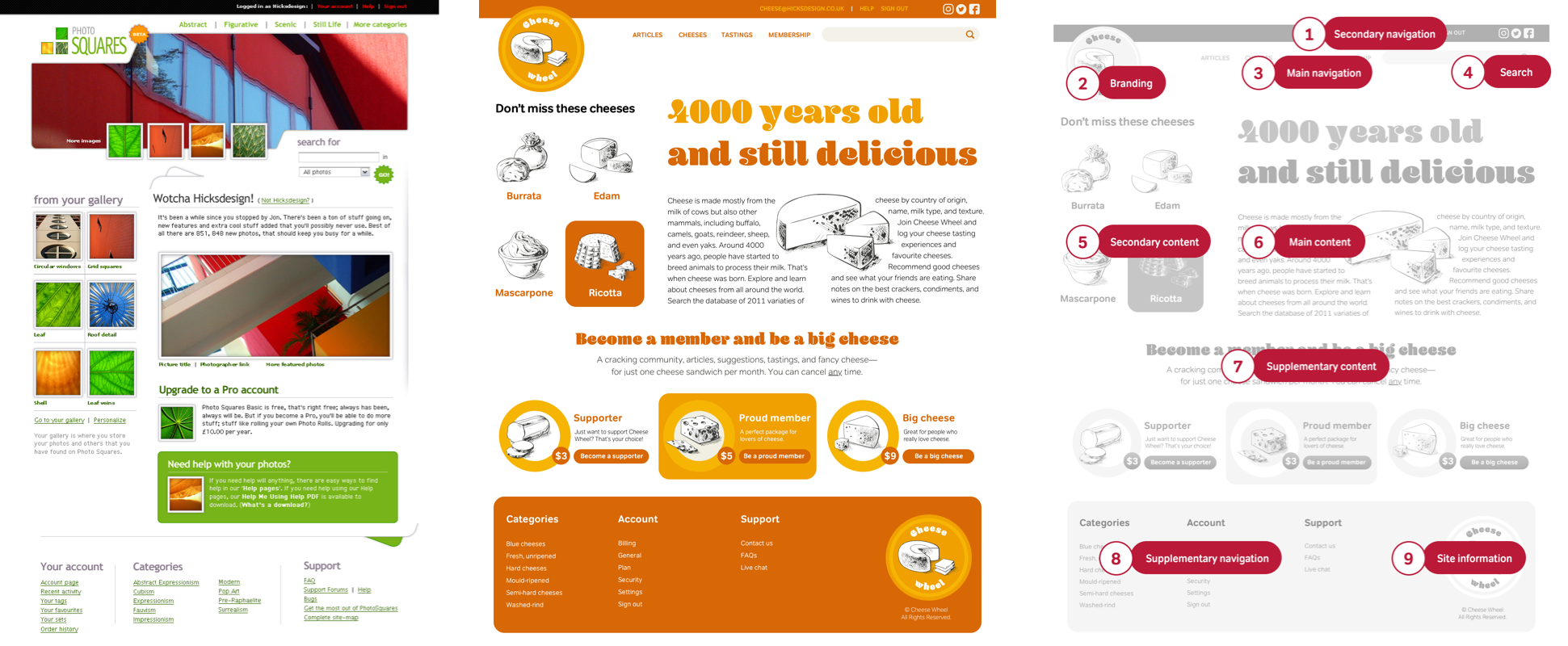Announcing Transcending CSS Revisited
I wrote my first book, Transcending CSS: The Fine Art of Web design, way back in 2006. It became a success and since then I’ve had countless people tell me it was influential in their careers. For example:
I would be hard-pressed to think of another book that has been as influential on my career as Transcending CSS. The semantically structured code I write every day contains the fingerprints that came from the inspiring examples in this work. I am still quick to embrace the “transcending spirit” to expand the creative possibilities of the sites I build.
Jeff Bridgforth
And:
The breakthroughs in Transcending CSS were pivotal in my early career. The skills I learned at the time put me well ahead of others in the field, and helped kickstart my career. I was able to do things most didn’t see as possible at the time, and now are commonplace.
Chris Lackey

When I wrote the acknowledgements in 2006, I said:
Writing this book has been one of the hardest, but at the same time, the most rewarding challenges in my life.
I meant it when I said then writing Transcending CSS was one of my hardest challenges, but I haven’t explained why until today.
Although I’d maintained a positive public profile, the reality was that in 2006, my business and personal life were in tatters. My business partner in a company we’d founded together was doing his level best to undermine me personally and professionally. Two weeks after signing the contract to write Transcending CSS, I walked away from the business I’d co-founded.
At home, my seventeen-year-old marriage was struggling too. My behaviour and mental health were at their worst, so my wife and I separated for a few months. That was a terrible mistake and my biggest regret. It was also the worst time to start writing my first book.
Saying writing Transcending CSS was hard would be an understatement. I had no experience of writing anything longer than a blog post. When a promise of guidance didn’t materialise, the whole project looked like it would fail, adding to the fragility of my already poor mental health.
After moving home—and with only two months before my deadline—I started Transcending CSS from scratch with the help of my editor Karyn Johnson and support from my wife. During the day, Sue helped me structure my thoughts and organise the book’s content. Every evening for two months, Karyn and I worked for hours over video chat, editing the day’s content and planning the next day of writing. By a miracle, we finished the book only a week behind schedule.
Rereading Transcending CSS for the first time in almost fifteen years has been challenging too. This book brings back memories of a period I’d rather forget. But unlike in publishing, there are no second editions in life.

Peachpit/New Riders have given me the publishing rights to Transcending CSS, so I felt it was time to revisit this book. Not to update its content or write a second edition, but to examine the approaches we took and the tools we used at the start of the web standards revolution in website design. The content of Transcending CSS Revisited is much the same as it was when published in 2006.
I’ve tightened up my writing, changed the spelling from US to British English, and made minor edits for this new format. I’ve checked every URL and replaced them with Wayback Machine URLs when needed.
It’s important to remember how we worked in the past so we can learn lessons for the future. For historical reasons, I’ve retained all original information and examples of code, even when they’re no longer relevant.
Transcending CSS Revisited is available to read online for free, with a new foreword by none other than Rachel Andrew. I have no hesitation in saying without Rachel, none of the CSS we now use today would’ve been possible.
In the ePub and PDF versions of Transcending CSS Revisited, I’ve also added a commentary where I explain what’s changed since the original Transcending CSS and how we should work today. An ePub and PDF bundle is also available to buy for only £9.99+VAT.
* Student price. Regular price £9.99 plus VAT. Ebook includes ePub and PDF formats with an exclusive author’s commentary.
I hope you enjoy this version of Transcending CSS Revisited.









